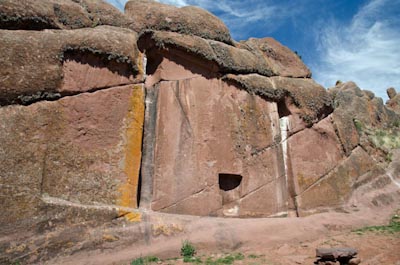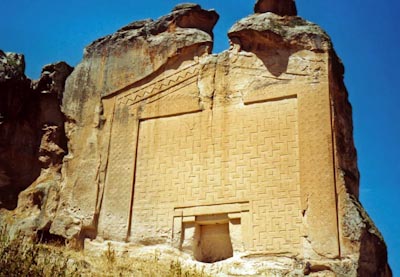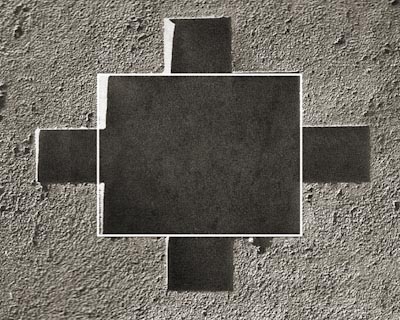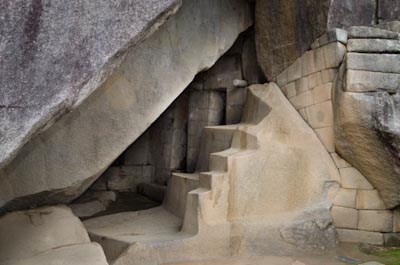THE OTHERWORLD IN THE ANDES.
part II

The carved hill of Amaru Muru is described as a portal to the Otherworld. The name means ‘serpent’, a reference to the telluric current that passes through it.

The carved hill of Amaru Muru is described as a portal to the Otherworld. The name means ‘serpent’, a reference to the telluric current that passes through it.
In the first part of this article we looked at the chullpas of Silustani and Cutimbo and examined their possible role as ritual chambers used in the ritual of living resurrection, as performed worldwide in Mysteries schools by initiates to access the Otherworld and return from this voluntary near-death experience into a living body.
Southeast of these sacred sites lies a third, a sandstone massif on the western edge of Lake Titicaca, and it too is linked with the Otherworld. The hill is called Hayu Marca, literally ‘Gate of the Spirits’. Long ago, when the water level of this inland sea surrounded it, the hill was an island resembling a large teardrop, much like Glastonbury Tor once did. And along its façade, nameless people carved a monumental portal and called it Amaru Muru.
Amaru means ‘serpent’ in Qechua, and as with similar locations around the world, the designation identifies the site as a conduit for the Earth’s telluric currents. Together with the high content of iron oxide already present in the rock, the place leaves an indelible impression on anyone who ventures here. The Catholic zealots who conquered this land felt unnerved by it, so much they called it the Devil’s Doorway. Local people often report a blue light emanating from a tunnel inside the rock, or strange people dressed in unusual clothing emerging from it and travelling towards Lake Titicaca.
The oldest legend describes Amaru Muru as "a doorway to the lands of the gods," and how in times long past great heroes passed through this gate for a glorious new life of immortality in the Otherworld. A hollow niche at the base faces the rising Sun at the Equinox and accommodates a person of average height. Curiously, the work bears a passing resemblance to Egyptian ‘false doors’ found in ritual chambers — symbolic portals through which the soul travels between worlds.
This portal into the Otherworld has a twin on the opposite side of the world, at Yazilikaya in Anatolia, and comparing the two would lead anyone to believe they were carved by the same artist. The vertical limestone outcrop has been incorrectly linked as the burial place of Midas, the fabled king who turned everything he touched into gold. However, the king’s body was never found here, not surprising given that mida is the Phrygian surname of Cybele, a local adaptation of Demeter, the presiding goddess of the Greek Mysteries and its ritual of living resurrection. Above it, on the summit, there is a rock-cut altar and accompanying tunnels that lead 900 feet down into the bedrock, where initiation was conducted. The same is true of Amaru Muru. There exist vestiges of some kind of rectangular structure on its summit, while behind the portal a tunnel descends twenty-four feet into the rock face before reaching a brick wall, erected by the authorities lest anyone should disappear into the bowels of the Earth, because as pre-Inka legends claim, the tunnel extends 800 miles to Cusco.
Even stranger is the suffix kaya in Yasilikaya, because it is a Quechua word meaning ‘tomorrow’, while yaşlı in Central Asia is ‘a person of great age’. The genetic link between people of Central Asia and South America has long been known, but to add to this a linguistic bridge plus mirrored sacred sites sharing a common purpose implies a shared tradition of unfathomable age.

The carved portal of Yasilikaya is dedicated to Cybele, the tutelary goddess of temples associated with resurrection rituals.
The Aymara of the Andes considered the Southern Cross constellation to lie in a sector of the Milky Way marking the entrance into the Otherworld. Their prime symbol was a cross called chakana, which means ‘to bridge or cross’, and reveals much about their recognition of the umbilical link between the here and hereafter and its importance in the conduct of human affairs. The oldest iteration of the design — a rectangle sprouting an uneven armed cross — is found in the temple of Tiwanaku and represents the three levels of existence: the Otherworld of gods, the Middleworld of Mother Earth, and the creative Underworld. Its design is defined by the unusual ratio 6:5, which is shorthand for the relationship between the Earth’s precessional cycle of 25,920 years divided by its 21,600-year axial tilt. This 6:5 ratio allows self-aware life to be established on Earth. No other rock in the solar system bears this ratio.
How the Andeans discovered this is a mystery, unless you accept they performed this out-of-body journey and pulled the information from an astral library, after all, initiates like Pythagoras and Plato stated how their philosophies were shaped by the knowledge gained from their own resurrection experiences.

The oldest known iteration of the Andean Cross consists of a perfect 5:6 ratio rectangle.
Every June solstice the Andean people celebrated the resurrected god of nature by undertaking a sacred pilgrimage to the Otherworld from Cuzco to Machu Picchu, while on the same day, on the other side of the world, the identical ritual was performed along the Nile celebrating the resurrection of the god-man Osiris. The Aymara regarded the entire valley from Cusco to Machu Picchu as a reflection of the sky and saw the Urumbamba river running through it as the terrestrial counterpart of the Milky Way. Thus by following the course of the river between sacred sites they imitated the ordeal of the soul on its journey to the Otherworld. The Andean accounts of the afterlife journey used the symbol of a bridge across a raging river, and as the soul wandered through the shadow world it required assistance from two black dogs capable of seeing in the dark — just like the Egyptians with Anubis and Upauat of the Egyptians, and the Greeks with the hounds of Hades.
Upon reaching Machu Picchu, assuming they followed a pattern identical to the practice in Egypt and Asia Minor, a select group of initiates would have been taken aside from the general crowd to the sacred precinct, which survives to this day. Here, beneath a curved tower, lies a most unusual altar cave carved into the bedrock, beneath a colossal, granite ashlar, which at first sight is identical to the main portal into the Great Pyramid at Giza. This ‘cave’ is carved into niches, behind which stand two large, angled doorways.
The purpose of this chamber — aside from receiving the solstice sunrise — was to teach initiates the correct path into the Otherworld: the left door would only take you so far, whereas the right door would lead to a chamber used for the final initiation.
This simple teaching highlighting the limitation of left-brain logic in shamanic journeying was still being taught by the philosopher Zeno at his Mysteries academy at Hyele in the 5th century BC; its doors and attendant tunnels still exist.
Return to Articles

Ritual cave at Machu Picchu featuring two doors. The ledges may represent the stairway to heaven.